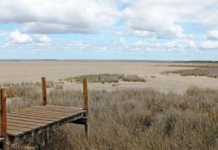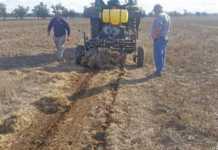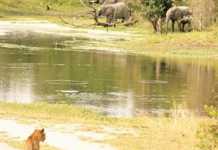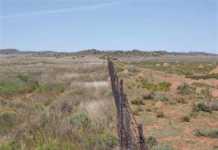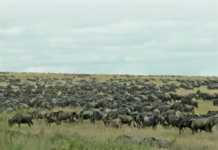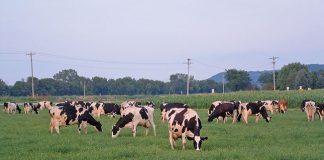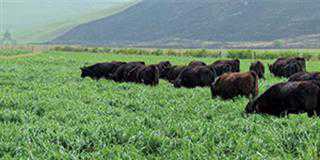If you believe natural is best, then inoculate your soil with the right mix of root fungi or mycorrhizae, says habitat planner Ben Breedlove. They can help in crop production, land-use applications such as roadside management, and also veld rehabilitation. Roelof Bezuidenhout reports.
It’s become generally accepted that conditions of higher plant diversity require, except in extreme conditions such as the Arctic and non-vegetated volcanic slopes, the action of mycorrhizae, or root fungi. Adding these factors to a production system could be the single management step with the potential to deliver the greatest overall initial and long-term boost to crops, pastures and natural lands. This according to Pretoria- based habitat planner Ben Breedlove. Breedlove says mycorrhizae are becoming big business in forestry, large-scale rehabilitation projects, golf-course maintenance, roadside rehabilitation and grassland restoration. “Early plant growth is far more rapid and robust when higher plant species-specific mycorrhizae are present. Invasive species and weed management problems are less severe and are often prevented when mycorrhizae required by the native species are used during seeding and rehabilitation processes,” he explains.
Once re-established in an area, the fungal species’ spores are transported by burrowing and grazing animals. Studies in Australia have shown that grazing by large and small wildlife not only distributes mycorrhizal spores, but also facilitates the germination of both the fungi and the associated plant seed that otherwise would not become re-established. Similarly, small burrowing animals transport mycorrhizal spores in their fur with consequent benefits to their transport and demonstrated increases in plant diversity as the mycorrhizae are established in new locations.
The Californian state government in the United States now requires a mycorrhizal mix to be used with specified seed mixes for roadside rehabilitation following construction and maintenance. The combination results in decreased maintenance requirements such as periodic watering or the need for fertiliser that leaches and contributes to water pollution.
Their use in golf-course maintenance results in a more robust fairway, lower nutrient requirements and improved turf conditions during drought. In forestry, nursery and grow-out conditions, plant growth is accelerated and more robust, and higher quality seedlings are produced. reedlove explains there are three mycorrhizal applications: in crops, in land use and in veld rehabilitation.
In crops
“As the value of mycorrhizae in crop production becomes more widely understood and the production and utilisation protocols standardised, it is likely that mycorrhizal inoculants will become as standard as current production and planting protocols for nitrogen-fixing bacterial inoculants,” says Breedlove.
In the meantime, however, he suggests that tests be conducted for particular soil type/crop/mycorrhizal relationships, that its use be based on those studies, and that generic products as well as non-local results and products be viewed with scepticism. “In crops, mycorrhizal relationships and hyphal growth require time to establish. The network of fungal filaments is highly susceptible to soil disturbances such as mixing and drying. Their value and efficacy is a function of the maturity of the relationship,” he explains, drawing a distinction to fertiliser application. He emphasises the importance of conditions during and following inoculation. “Site preparation activities either are or can be detrimental to efficient mycorrhizal functioning.”
Crop use is a targeted application – the mycorrhizal inoculant is applied when planting seed. It can be either a single fungal species, or a simple multispecies mix. Breedlove says most crop species have mycorrhizal associations.
In land use
This category applies to pasture, golf courses and other simplified systems in which soil disturbance is infrequent. They are called simplified systems because they comprise only a few species of higher plants, and inputs and management efforts are, like in the crop systems, moderate to high. “In contrast to the crop use application where there is a fixed and narrow relationship between the fungal species and the single crop species, the land-use application has broader factors to consider.” A crop-use application is generally completed within a season. In pastures or golf courses, year-round use and maintenance must be considered.
Seasonal conditions have temperature, rainfall and species changes. The species changes that need to be considered take place in the fungal component of the mycorrhizal association and within the higher plant species component of the relationship. Breedlove says several to many different fungal species with high value in a mycorrhizal relationship usually need to be present and functional to achieve best results for proposed above-ground land uses. While bulk reactor production of inoculants can work well for this application, Breedlove cautions that the “soil/fungal species/higher plant species fit” must be known and the inoculants tested under the specific circumstances. As many factors are manipulated – such as irrigation, fertilisation and soil permeability – a well-designed product can be effective over a wide range of conditions.
In veld rehabilitation
Veld – the natural non-agricultural condition – comprises many different species of higher vegetation. This is the reason why many fungal species in high-value mycorrhizal relationships are required to create optimal conditions for high habitat or high use value. The higher plant species numbers and proportions may be significantly degraded, and this has its own impact on mycorrhizal occurrence and functioning.
The mycorrhizal status is also affected by soil management practices, or the lack thereof. Breedlove explains that past and/or present land-use practices may have determined all these sets of conditions. “The simple, low species diversity, bulk-produced mycorrhizal inoculants that work for simplified systems may well be a waste when applied in a natural or non-agricultural environment. On the other hand, if the system has been lacking in higher plant and fungal species for a long period of time and is functionally in an agricultural simplified status, then a bulk-produced product may give a major boost to diversity as well as biomass recovery and persistence for higher vegetation.” However, such a product type does not yet exist in South Africa.
Even when it becomes commercially available, Breedlove says, “it should still be a tailored product probably requiring several different commercial reactor products applied in the field in several application runs.
Repeat applications would be required as it is unlikely that any single bulk inoculant would result in a sufficient diversity of species to meet the needs of high functionality veld.”
Breedlove suggests exclosures be used as points-of-spread. These would prevent grazing and browsing, and support the occurrence and retention of all the wildlife species that were, at one time, components of a fully functional, optimal habitat. “Of course, you’ll have to stock these points-of-spread with the small mammals and a high vegetation species diversity, as well as high quality soil plugs from the best, most diverse veld that you can find. Then, you’ll have to add everything that is still missing – including root fungi,” he explains. But forget elixirs, brews with generic inputs, those made anaerobically and those that have not been tested for your crop and soil situation, he advises. For more information contact Ben Breedlove on 083 457 4351 or e-mail [email protected].

